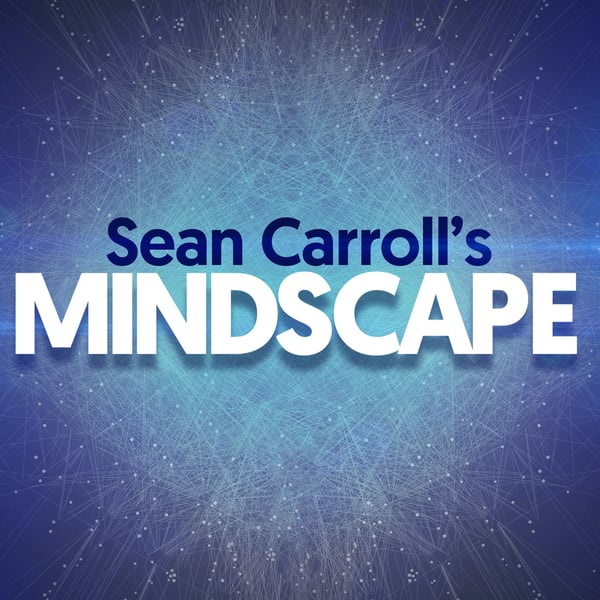190 | Lea Goentoro on Regrowing Limbs
Sean Carroll's Mindscape: Science, Society, Philosophy, Culture, Arts, and Ideas
Sean Carroll | Wondery
4.8 • 4.4K Ratings
🗓️ 28 March 2022
⏱️ 64 minutes
🧾️ Download transcript
Summary
Biological organisms are pretty good at healing themselves, but their abilities fall short in crucial ways. Planaria can be cut into pieces, and each piece will regrow into an entire organism; but for most advanced animals, loss of a limb becomes a permanent condition. But why should that necessarily be so, if an organism’s genome knows what it’s supposed to look like? Lea Goentoro’s lab has recently produced surprising results that indicate that it’s easier than you might think to coax animals into regenerating limbs.
Support Mindscape on Patreon.
Lea Goentoro received her Ph.D. in chemical engineering from Princeton University. She is currently Professor of Biology at Caltech. Her research involves how biological systems function and develop across a variety of scales, including perception, organization, and self-repair.
- Lab web page
- Caltech web page
- Google Scholar publications
- “A conserved strategy for inducing appendage regeneration in moon jellyfish, Drosophila, and mice“
See Privacy Policy at https://art19.com/privacy and California Privacy Notice at https://art19.com/privacy#do-not-sell-my-info.
Transcript
Click on a timestamp to play from that location
| 0:00.0 | Hello everyone and welcome to the Mindscape Podcast. I'm your host Sean Carroll. |
| 0:03.6 | One of the fascinating things about biological organisms is their capacity for self-repair. |
| 0:10.1 | Organisms are much better at fixing themselves, healing, right? Then robots are machines, |
| 0:15.2 | at least as we currently build them. You might have a self-cleaning oven, but if you break the oven, |
| 0:20.7 | it's not going to fix itself, okay? But we all know that we can get a cut to wound, |
| 0:25.1 | even break a leg and heal ourselves, but also this healing has its limits, right? If we amputate a limb, |
| 0:31.4 | we're not going to grow it back. So where do those limits come from and how can we manipulate |
| 0:37.6 | them to get better at doing things that we couldn't have imagined doing before? Today's guest, |
| 0:42.2 | Leah Gontoro is a biology professor at Caltech, and she studies the form of animals as they develop. |
| 0:49.7 | So similar a little bit to Michael Levin, who we had on the podcast a while back, somehow in ways |
| 0:56.0 | that we don't fully understand, the genome, the DNA of biological organisms, has a plan for how the |
| 1:03.8 | grown-up animal is supposed to look, okay? And how that actually gets manifest over the course of |
| 1:09.7 | development is very interesting and something we're trying to learn about. So what Leah's lab was |
| 1:14.3 | actually studying was what happens to jellyfish when they lose a limb. Jellyfish have a certain |
| 1:19.8 | symmetry like you might have an eight-armed jellyfish, and usually if you just amputate a limb, |
| 1:25.2 | they will not grow it back, they will sort of rearrange the other limbs to maintain some symmetry, |
| 1:30.0 | so they'll forget that the old limb was there. But what they found in the course of this exploration was, |
| 1:35.9 | sometimes the jellyfish would grow a limb back. We just go back to being an eight-limb jellyfish |
| 1:41.2 | again. So scientifically of course, when does that happen? What are the conditions? And fascinatingly, |
| 1:47.2 | what they found is that they don't need to really coax the jellyfish into re-growing a limb. |
| 1:53.0 | They just need to provide it the right environment and the right nutrition, right? The right chemicals |
| 1:58.0 | around it. The cells of the jellyfish know what they're supposed to look like, and so of course, |
... |
Please login to see the full transcript.
Disclaimer: The podcast and artwork embedded on this page are from Sean Carroll | Wondery, and are the property of its owner and not affiliated with or endorsed by Tapesearch.
Generated transcripts are the property of Sean Carroll | Wondery and are distributed freely under the Fair Use doctrine. Transcripts generated by Tapesearch are not guaranteed to be accurate.
Copyright © Tapesearch 2025.

